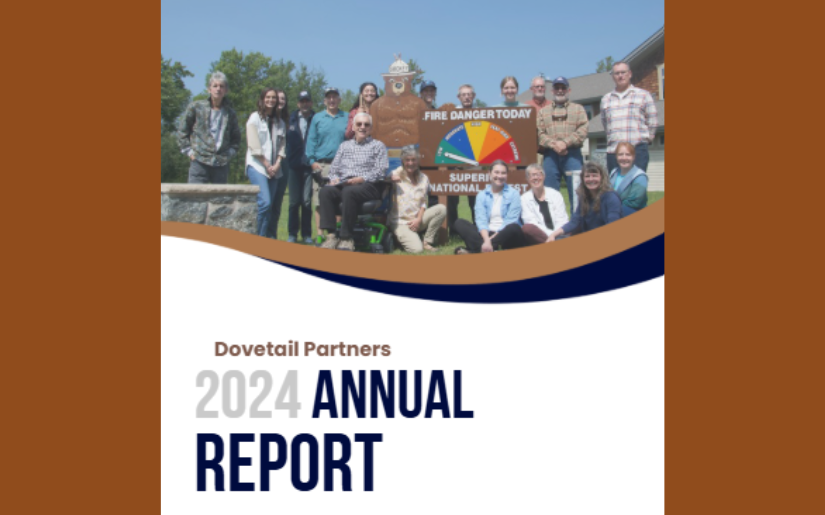In the parlance of forestry, intermediate treatments include entries into a forest stand between the time of establishment of reproduction and up until the end-of-rotation harvest. Intermediate treatments include thinning and overstory treatments as well as understory planting, weeding and cleaning, salvage and sanitation cutting, and prescribed fire. Such treatments are applied to sustain ecosystem health and function; contain costs; improve stand quality and the proportion of large diameter, high quality stems (e.g. sawtimber); optimize yields; and shorten the period of investment return.
In large areas of the northern United States, including the Great Lakes Region, forests are actively managed for the production of wood fiber. Favored trees are typically fast-growing pioneer species, with management geared toward short rotations and even-aged stands (i.e., harvesting is often by clear-cutting). In this environment, intermediate treatments such as thinnings and partial cuttings have not been given high priority, in part because sufficient wood fiber volumes could be secured without the need for additional stand treatments between stand establishment and final harvest. Strong markets for pulpwood – used not only in manufacturing pulp and paper, but composite lumber and panels as well – have tended to minimize economic drivers for management aimed at production of sawtimber which is more likely to involve intermediate treatments.
One problem with fiber oriented, short rotation, even-aged management is that the forest mosaic over a landscape tends to be simpler than otherwise might be the case, a reality that has ecological and aesthetic implications. Another problem, and one that has the greatest impact on private forest landowners who own more than half the productive forest land nationwide, is that unless that land management unit is quite large, harvests occur only once or twice in a lifetime of a forest owner. Even if rotations are as short as 40 years, harvest activity and related income skips every other generation, discouraging interest and active involvement in forest land management. Moreover, the infrequent harvests that do occur tend to be high impact events, particularly for an owner of a small forest tract in which the entire area is likely to be affected. This kind of dynamic likely affects the attitudes of forest owners, as well as overall public support for forestry.
Today, there are increasing concerns about the willingness of private forest owners to participate in the practice of forestry. As forest lands are passed on to the next generation, and in the process divided into smaller and smaller parcels, will the new owners still be willing to periodically harvest their trees? Can public support for forestry be maintained, or will opposition to forest management and harvesting activity intensify? There are also concerns about the possible impact of growing interest in forest biomass for use in energy production; is it possible to accommodate such interest while also improving forest health and vitality?
The use of intermediate treatments and modified harvest regimes, so as to provide a more even flow of forest outputs than is typical, and to develop a greater diversity of species, age classes, and structures, may be the key to increasing active engagement of forest owners in forestry, and to gaining greater public support for forestry. Such practices could also lead to greater forest productivity over the long term and increased forest use options.
This report examines the use of thinning, partial cutting systems, and other intermediate treatments in the practice of forestry. The focus herein is on forests typical of southern Canada and the northern U.S., and of Minnesota in particular. There is now a considerable body of knowledge that suggests that wider adoption of intermediate treatments could increase both forest productivity and forest health. The possibility that public interest in and support for forestry might also be enhanced provides a win-win combination that could improve the outlook for profitable production of diversified forest products, including biomass in renewable energy production.
- Lead AuthorBowyer
- DateMay 2009
- CategoryEnvironmental, Forestry, Forests, Management
- Project FileDownload

.png)
.png)



